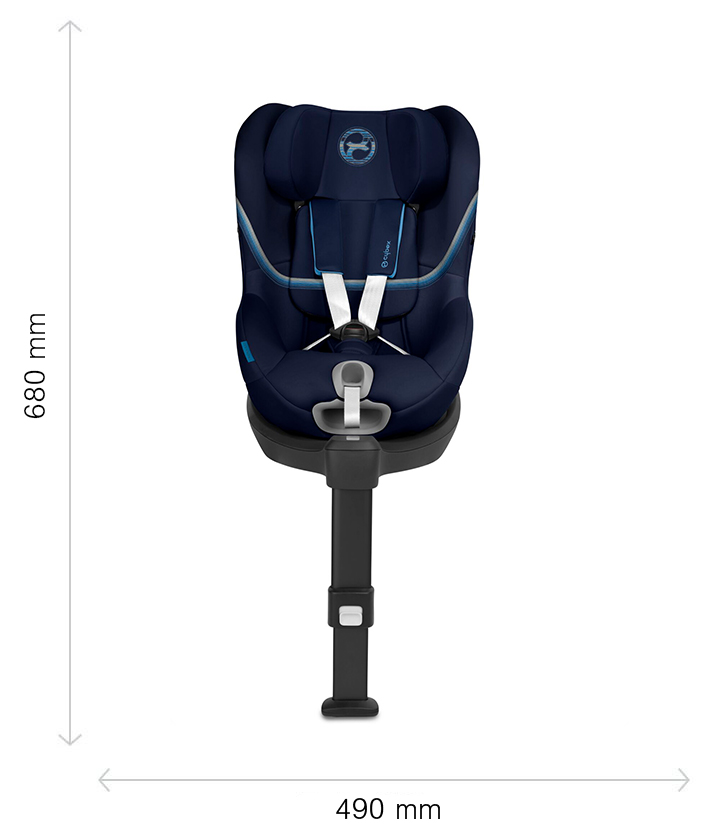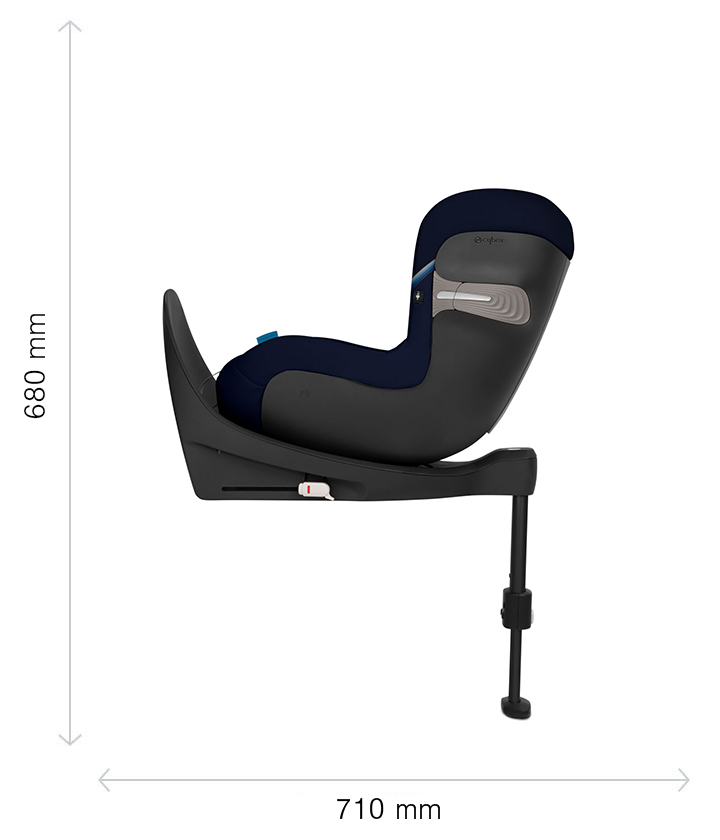Sirona SX2 i-Size
- Età Da 3 mesi a circa 4 anni
- Peso max max. 18 kg
- Regulation UN R129/03
- Da 45 - 105 cm
- Da 76 - 105 cm
Questo prodotto non è più disponibile
Premi
Dettagli del prodotto
Funzionalità più importanti:
- Veloce e facile da usare per far salire il bambino a bordo
- Viaggio comodo nella posizione più sicura
- Protezione laterale preimpostata per una corretta installazione
Il viaggio sarà di conseguenza sicuro e spensierato
Basteranno davvero pochi secondi per portare il bambino a bordo e ruotare il seggiolino al contrario rispetto al senso di marcia, una posizione sicura e protetta dall’inizio alla fine del viaggio. Se desideri che il bambino sia rivolto nel senso di marcia quando diventa più grande, la rotazione di 360˚ ti consente di farlo in pochi secondi. Inoltre, l’avanzato sistema di protezione lineare a impatto laterale è preimpostato per un utilizzo immediato: un pensiero in meno di cui occuparti per poterti concentrare sul viaggio.
Specifiche tecniche:
- Normativa i-Size ECE R129/03
- Altezza: 61 - 105 cm (da 45 cm con inserto per neonati)
- Peso: max. 18 kg
- Età: dai 3 mesi circa fino ai 4 anni (dalla nascita con inserto per neonati)
Funzioni:
- Meccanismo di rotazione a 360°
- Seggiolino rivolto contro il senso di marcia
- Protezione lineare avanzata a impatto laterale
- Tecnologia di riduzione dell’energia
- Funzione reclinabile con una sola mano
- Poggiatesta ad altezza regolabile
- Supporto per cintura
- ISOFIX
- Scocca ad alto assorbimento d’urto
Istruzioni per la cura:
- I rivestimenti in tessuto sono lavabili in lavatrice a 30°
Compatibilità:
- Compatibile con inserto Newborn, Rivestimento Estivo, Porta Bevande, Guide ISOFIX, Kit Sensorsafe 4 in 1
Installazione con ISOFIX: Attenzione al logo i-Size. Se il sedile del veicolo è contrassegnato con questo logo, è adatto per l’uso con tutti i seggiolini i-size, pertanto non comparirà nel nostro elenco di veicoli compatibili. Se il veicolo non è dotato di un sedile i-Size, verificarne la compatibilità. Se non si visualizza il proprio veicolo, contattare il nostro servizio clienti.

- Meccanismo di rotazione a 360°
- Il meccanismo di rotazione a 360° elimina la fatica di caricare il bimbo a bordo. E' semplice far salire e scendere il bambino grazie alla rotazione del seggiolino. Inoltre, non è mai stato così facile passare dalla posizione in senso di marcia alla posizione contraria.

- Seggiolino rivolto contro il senso di marcia
- Quando è rivolto al contrario, il seggiolino riduce significativamente il rischio di lesioni in caso di collisione frontale. Sirona SX2 i-Size consente di trasportare il tuo bambino in senso contrario alla marcia dalla nascita fino a un’altezza di 105 cm (fino a 18 kg, 4 anni circa). In base alle tue preferenze, Sirona SX2 i-Size può trasformarsi all’occorrenza in seggiolino auto per bambini rivolto nel senso di marcia (a partire da un’altezza di 76 cm e 16 mesi di età fino a 105 cm). Tuttavia, CYBEX raccomanda questa posizione di viaggio il più a lungo possibile con Sirona.

- Sistema avanzato di protezione lineare per l’impatto laterale
- Il sistema avanzato di protezione lineare a impatto laterale è pronto all’uso sin da subito, e non richiede ulteriori installazioni. In combinazione con la scocca ad alto assorbimento d’urto può attutire di circa il 25% le sollecitazioni da impatto laterale.
Video
How to Use the Sirona SX2 i-Size
Base integrata
Il seggiolino è dotato di una base integrata che si installa insieme a una gamba di carico e al sistema ISOFIX. Questo sistema garantisce sicurezza, stabilità e un’istallazione più semplice. Cerca il logo i-Size nel tuo veicolo per verificarne la compatibilità. Se il logo i-Size non è presente ma la tua auto è provvista del sistema ISOFIX, usa il nostro strumento per verificarne la compatibilità.
Misure
- Lunghezza
- 710 mm
- Larghezza
- 490 mm
- Altezza
- 680 mm
- Peso
- 14.1 kg



Che cosa include
- Seggiolino Bambino Sirona SX2 i-Size
- Base integrata
- Guida utente
editorial-content-downloads-title
Will the car seat fit in my vehicle?
Can I use this car seat on a flight?
Is it ok to keep using a car seat after an accident?
My car seat is faulty, how can I get it repaired?
Where can I get replacement parts for my product?
How do I correctly secure my child in the seat?
My child keeps trying to wriggle out of the harness system. What can I do about this?
When am I allowed to use the Sirona's forward-facing position?
How can I clean my car seat?
Can I install a rear-facing seat on the front passenger seat?
How should the headrest be adjusted?
Can I use the car seat on laterally-facing vehicle seats?
Can I use the car seat on rear-facing vehicle benches (e.g. in vans or minibuses)?
What do I have to bear in mind when installing the Sirona in my vehicle?
Can I also use this seat in a car without ISOFIX anchorage points?
What should I bear in mind when installing the car seat in my vehicle?
Where should I install a car seat in my car?
Can I use the car seat even when the side airbag is activated?
Are both side-impact protectors (L.S.P.s) needed?
Is my child allowed to rest his/her legs on the rebound bar?
The car seat is approved in compliance with the i-Size standard (UN R129). What does this mean?
What's the difference between UN R44 and UN R129?
When does a car seat expire?
What kind of clothing should my child wear when seated in the car seat?
How do I know when my child needs to change to the next car seat?
When is a child too big for the Sirona?
When is a child too big for the Sirona?
How do I install the cup holder?
When can I turn a car seat forward-facing?
How can I close the L.S.P.?
-
Per niente
-
Assolutamente
Utilizza le emoticon per darci un feedback e aiutarci a migliorare continuamente la tua esperienza di acquisto.






















